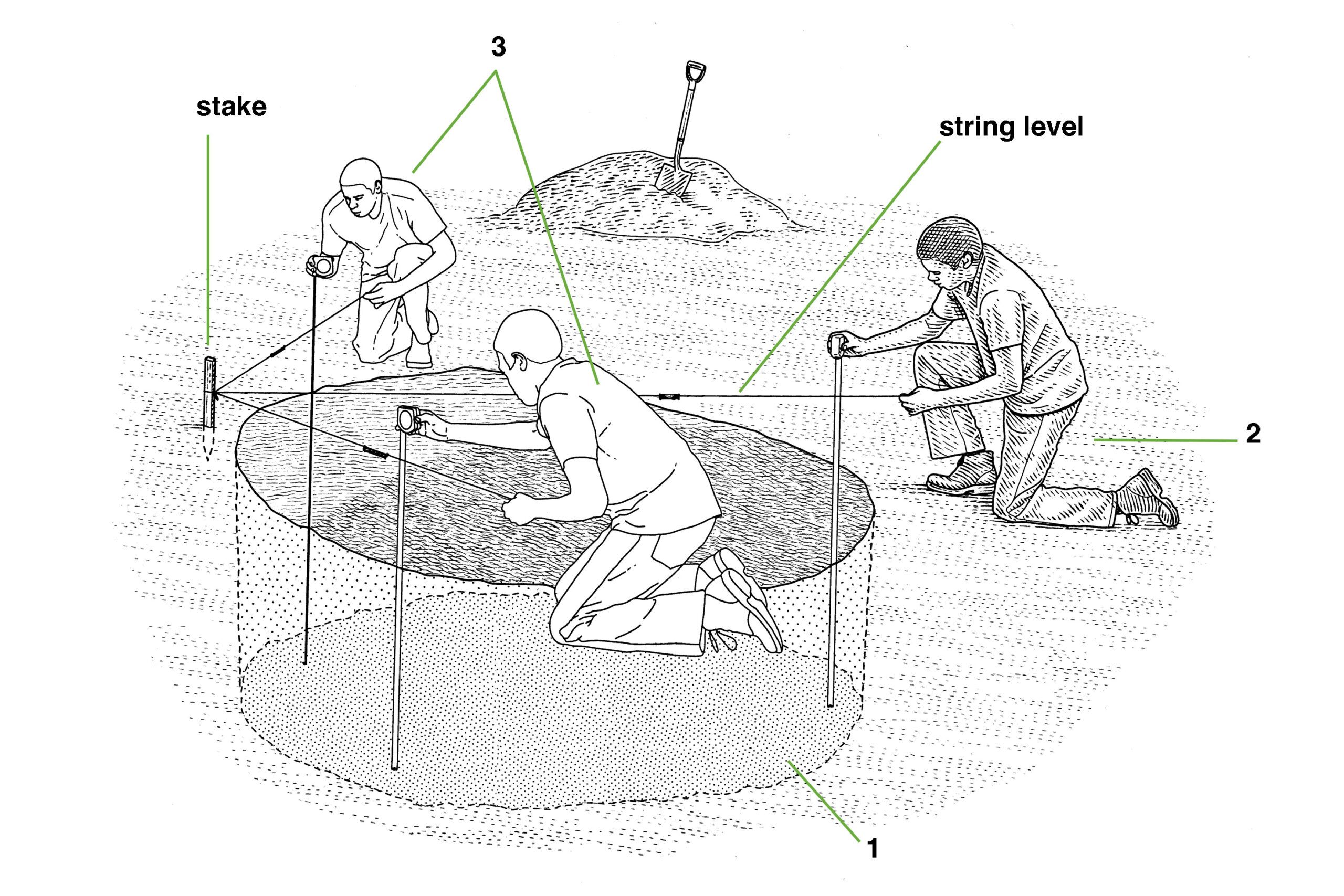Digging a flat-bottomed hole is a basic skill you’ll need to master for many home improvement and landscaping projects. These holes provide a level base for construction, establishing even weight distribution and structural integrity. Our guide walks you through how to dig a flat-bottomed hole on both flat and sloping terrain.
Tools You’ll Need
You’ll need the right tools to make the job easier and more precise.
Shovels and Spades
A sturdy shovel is your go-to tool for digging. Use a round-point shovel for the initial digging and a flat-edge spade to smooth the bottom of the hole. For deeper, narrower holes, a post-hole digger comes in handy.
Measuring Tools
Keep a tape measure on hand to check the depth and dimensions of your hole. For larger projects, consider a laser measure for quick and accurate readings over longer distances.
Leveling Equipment
For a truly flat bottom, use a string level, especially on sloped ground. A carpenter’s level or laser level helps ensure the hole’s bottom is even. For more precision, a builder’s level or transit might be necessary.
Preparing the Site for Digging
Proper preparation saves you time and effort in the long run.
Marking the Perimeter
Outline the area you’ll be digging with stakes and string. This visual guide helps you maintain the correct shape and size as you work. For circular holes, we recommend using a center stake and string to trace the circumference.
Assessing Ground Conditions
Check the soil type and moisture level. Rocky or clay-heavy soil may require different tools or techniques. If the ground is very dry, lightly water it the day before to make digging easier.
Digging on Flat Terrain
Digging on flat ground is straightforward but still requires some know-how to achieve a level bottom.

Begin digging at one edge of your marked area, removing soil evenly across the surface. Work your way systematically across the hole, aiming for a consistent depth. Use your tape measure frequently to check the depth as you dig.
Once you’ve reached your target depth, use a long straight edge and level to check for any high or low spots. Adjust these areas by adding or removing soil as necessary.
Digging on Sloping Ground
Sloping terrain requires extra steps, but you can still dig a flat-bottomed hole with the right approach.
Using Stakes and String Levels
Drive a stake into the ground near the highest point of your dig site, about 6 inches outside the marked edge. Tie a string around this stake and use a string level to create a level reference line across the hole.
Measuring from High to Low Points
With your level string in place, measure from the string down to the target depth at the lowest point of the slope. This measurement becomes your guide for the entire hole.
Adjusting Depth Gradually
As you dig, continually check the distance from your level string to the bottom of the hole. Adjust your digging depth to maintain a consistent distance from the string across the hole.
Specialized Methods for Different Projects
Different projects may require specific approaches to achieve the best results. Here are our recommendations:
- Below-grade fire pits: When digging for a below-grade fire pit, create a slight slope towards the center for drainage. Use a level to check that the outer rim is even all around.
- Deck footings: Precision is key. Use a post-hole digger to create deep, narrow holes. Check local building codes for required depth and width specifications.
- Retaining wall trenches: Retaining wall trenches need to be perfectly level along their length. Use a long straight edge and level to verify that the trench bottom is entirely flat and even.
Troubleshooting Common Digging Challenges
Even with careful planning, you may run into these obstacles during your dig:
- Correcting uneven bottoms: If you discover low spots after digging, add small amounts of soil and tamp it down firmly. For high spots, carefully scrape away excess soil with a flat shovel.
- Dealing with rocky soil: If you hit rocks, use a pry bar or digging bar to loosen and remove them. For larger rocks, you may need to dig around them and use leverage to roll them out.
- Managing excess water: Use a pump to remove groundwater. For persistent water issues, consider installing a French drain system to keep the area dry.
Finishing Touches
With these final steps, your hole is ready for the next phase of your project:
- Tamping the bottom: Use a hand tamper or plate compactor to firm up the bottom of the hole. This prevents settling and creates a solid base for your project.
- Final level checks: Perform a final check with your level and straight edge. Make any necessary adjustments to make the bottom as flat as possible.
- Preparing for the next steps: Once you’re satisfied with the levelness, clean out any loose debris. If your project requires it, add a layer of gravel or sand to create an even more stable base.
Safety Considerations When Digging
Safety should be a top priority when undertaking any digging project. Follow these safety best practices:
- Identify underground utilities: Before digging, call 811 or your local utility locating service to mark underground lines. This step prevents dangerous and costly accidents.
- Lift properly and take breaks: Use your legs, not your back, when lifting heavy loads of soil. Take breaks and stay hydrated, especially in hot weather.
- Wear protective gear: Wear sturdy work gloves to protect your hands from blisters and cuts. Safety glasses shield your eyes from flying debris, and steel-toed boots offer foot protection.

